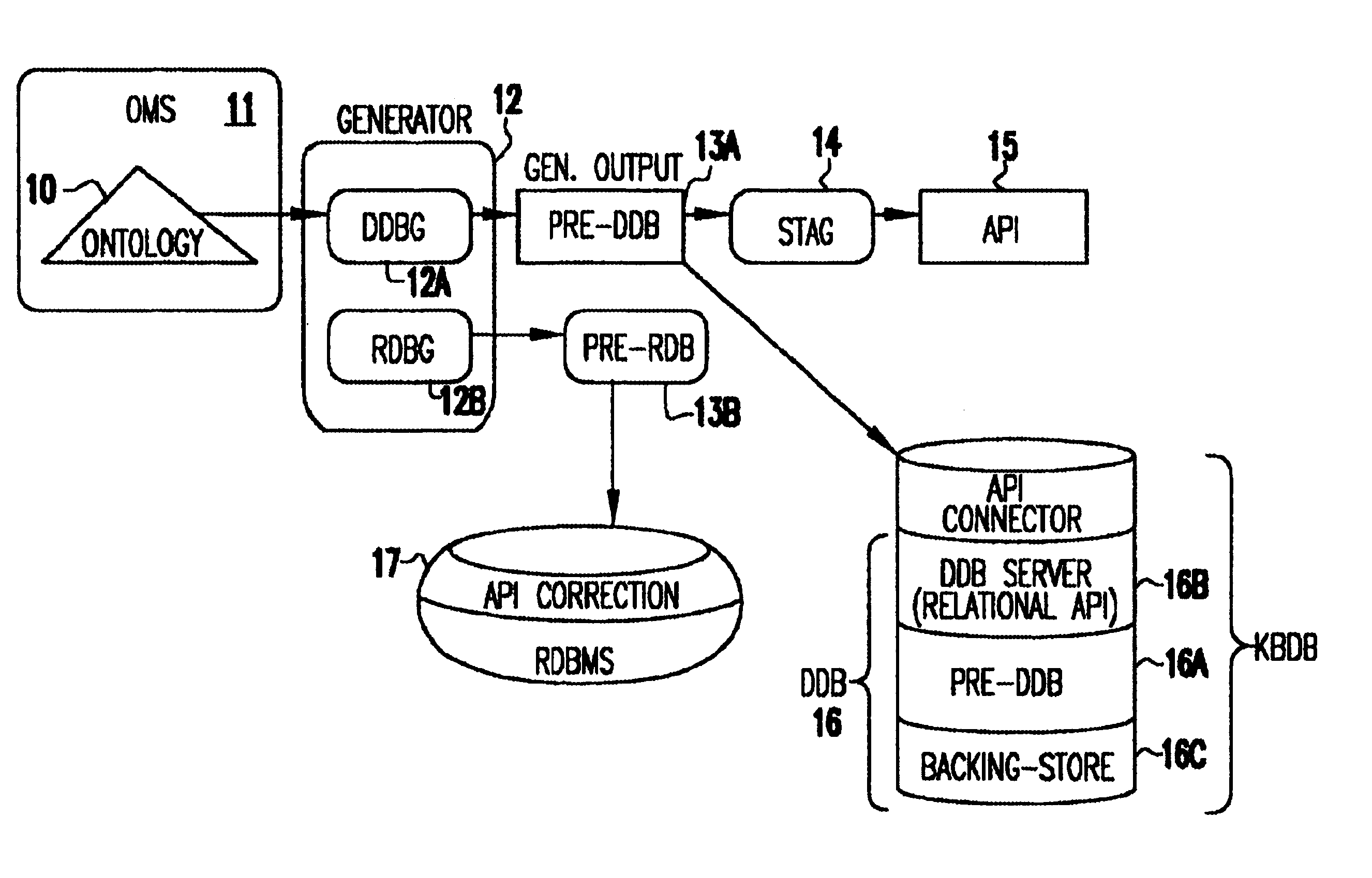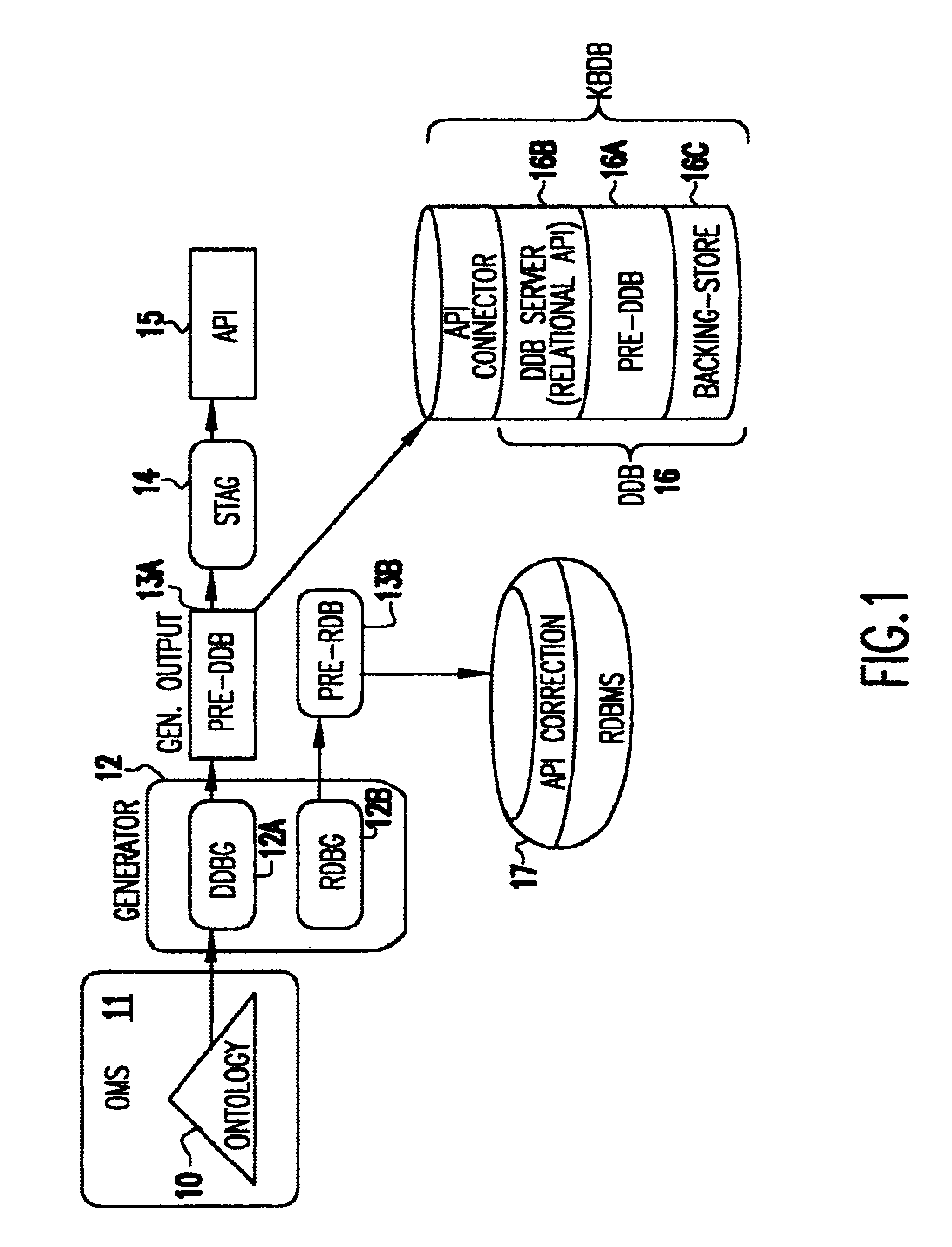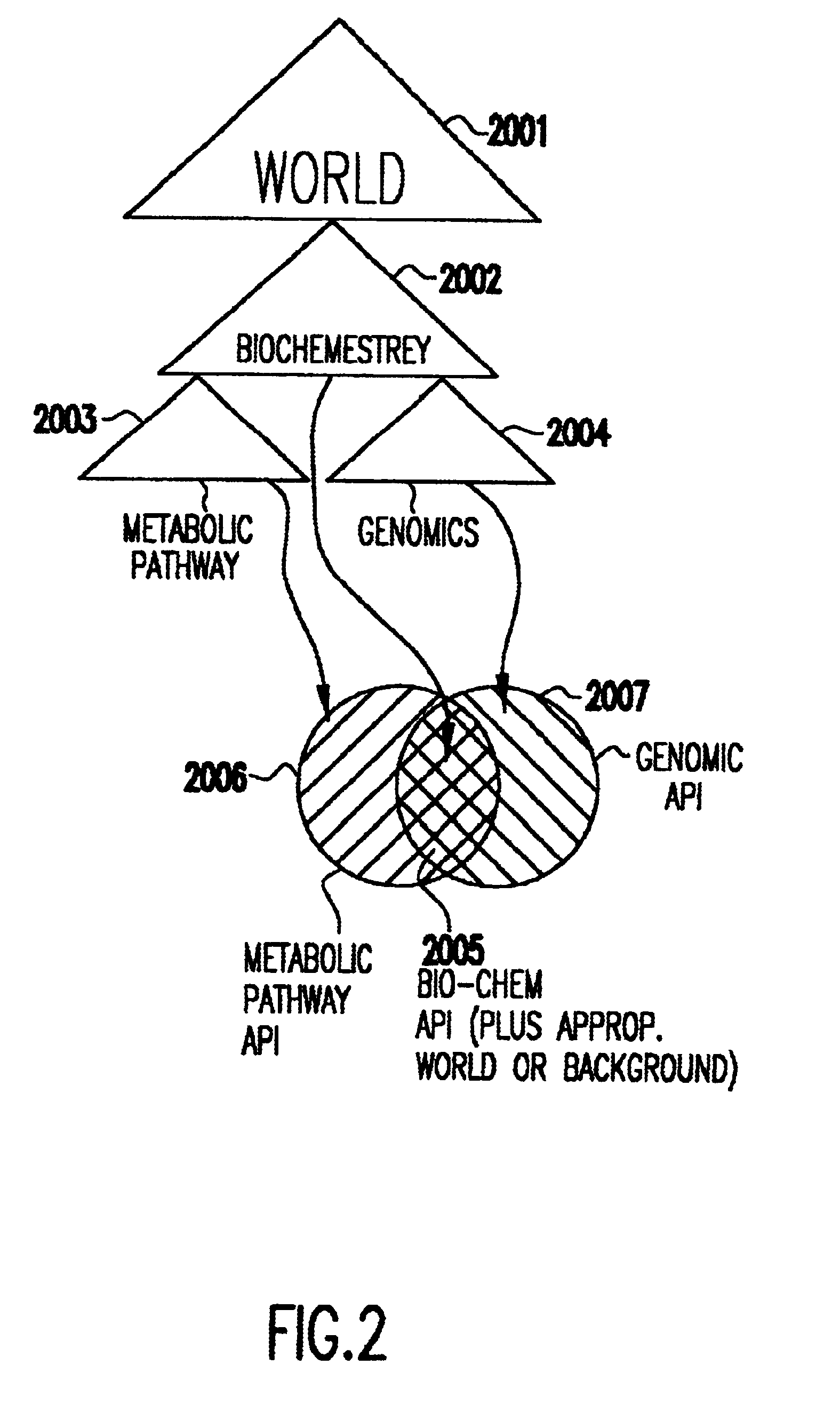Ontology for database design and application development
a database and database technology, applied in the field of database systems, can solve the problems of complex information handling and integration needs of modern enterprises, many problems faced by modern database customers that don't fit these criteria, and systems involving any sort of analytic component typically require extremely complex and fluctuating rules
- Summary
- Abstract
- Description
- Claims
- Application Information
AI Technical Summary
Benefits of technology
Problems solved by technology
Method used
Image
Examples
Embodiment Construction
In order to better understand the description that follows, a number of terms and concepts are herein defined.
Basic OWL Syntax
OWL is based on the Knowledge Interchange Format (KIF) language developed by the Stanford University Knowledge Systems Laboratory--reference the original Draft Proposed ANSI Standard (http: / / logic.standord.edu / kif / dpans.html) for a description of KIF.
The basic OWL expression is the literal, which has the following format:
(p c ?y)
This expression consists of a predicate, p, followed by a series of arguments. The argument c is a constant symbol and ? y is a variable. All variables, and only variables, have a `?` prefix character. Literals can form conjunctions and disjunctions, and can be negated;
(and (p a1) (q ?x) (r ?x))
(or (p a2) (q ?y))
(not (p a3))
where "and" indicates a conjunction, "or" a disjunction, and "not" a negation. OWL sentences have the following format:
(=>P Q)
The "=>" indicates that this is an implication; the first argument, P, is the antecedent...
PUM
 Login to View More
Login to View More Abstract
Description
Claims
Application Information
 Login to View More
Login to View More - R&D
- Intellectual Property
- Life Sciences
- Materials
- Tech Scout
- Unparalleled Data Quality
- Higher Quality Content
- 60% Fewer Hallucinations
Browse by: Latest US Patents, China's latest patents, Technical Efficacy Thesaurus, Application Domain, Technology Topic, Popular Technical Reports.
© 2025 PatSnap. All rights reserved.Legal|Privacy policy|Modern Slavery Act Transparency Statement|Sitemap|About US| Contact US: help@patsnap.com



